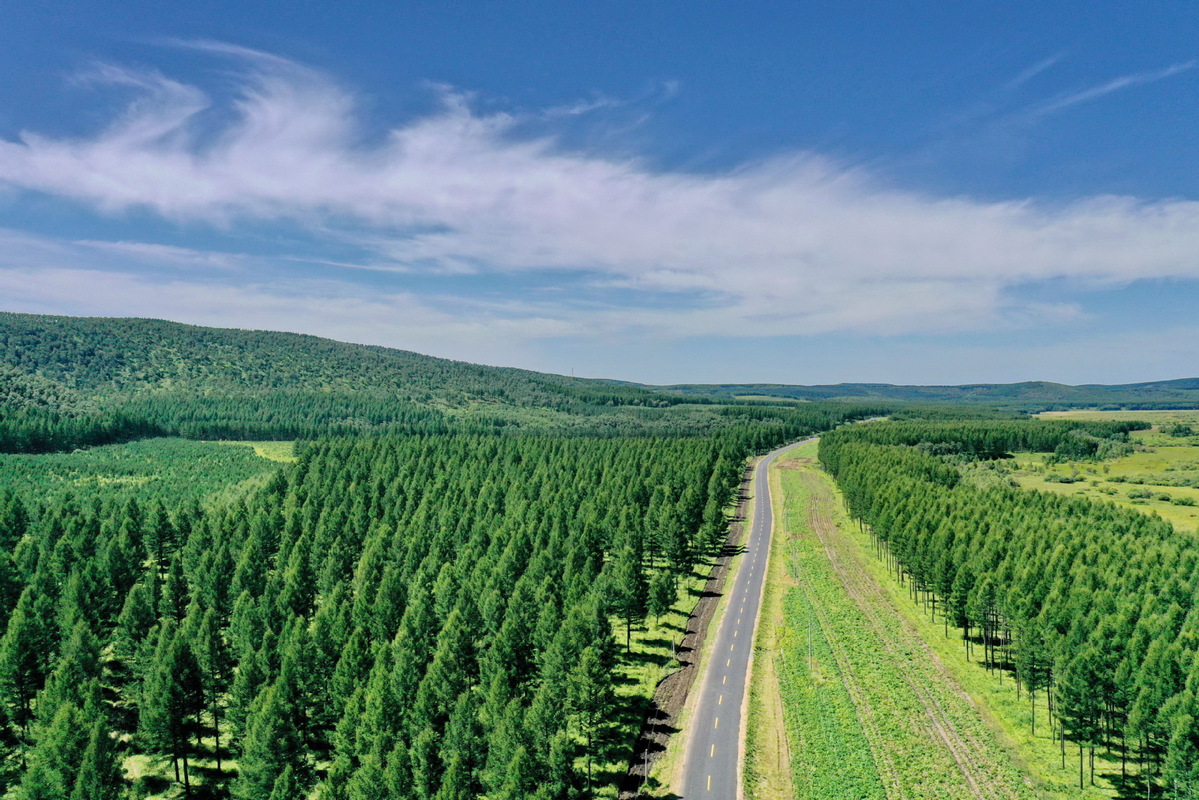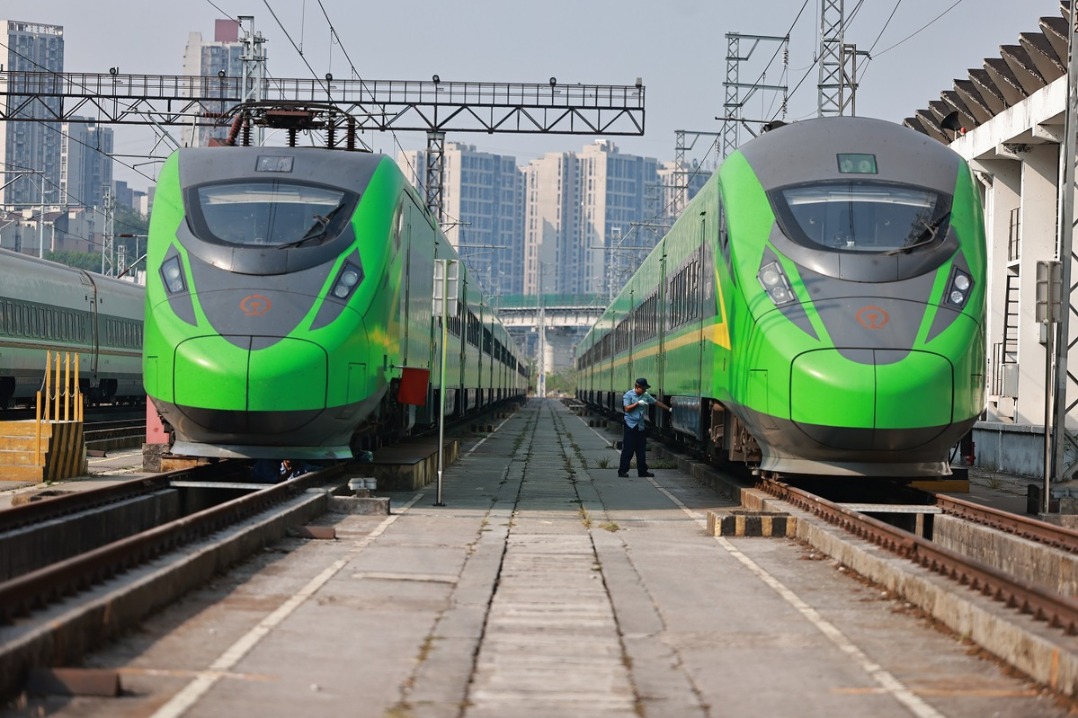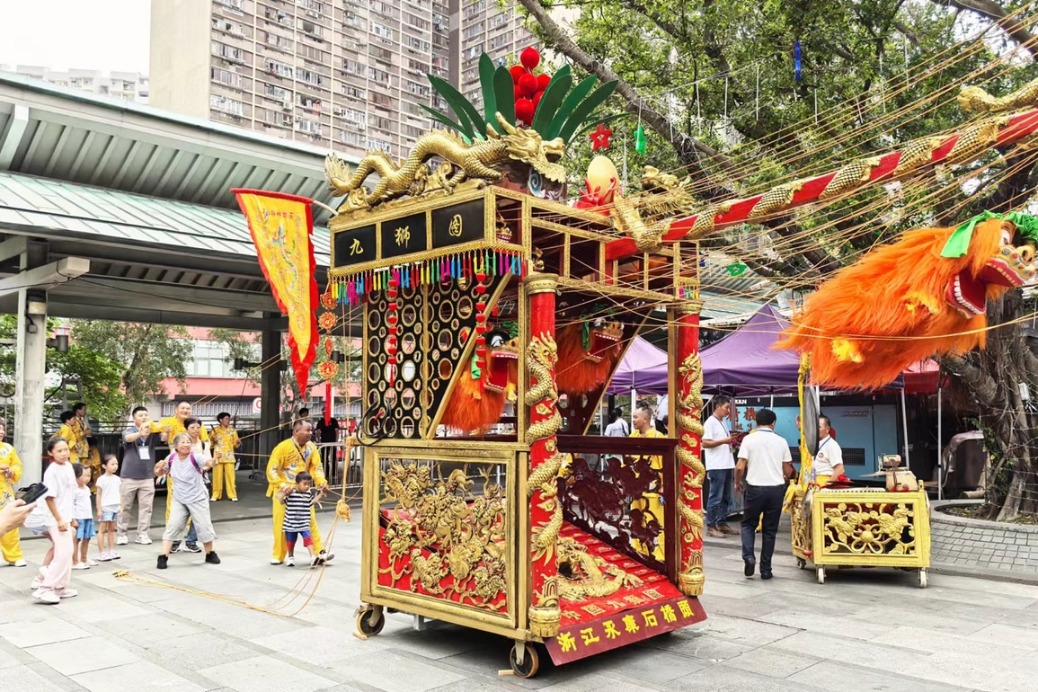Decoding China's 'green miracle' of Saihanba


BEIJING - Saihanba mechanized forest farm, the world's largest artificial plantation, has once again come into the spotlight as Chinese President Xi Jinping hailed it as an example of the global history of ecological progress during his recent inspection tour to the farm.
Situated in the northernmost part of North China's Hebei province, the farm was nothing more than a nearly deserted land over half a century ago.
From a wasteland to a sea of forests, the miraculous transformation of Saihanba has epitomized the country's efforts on improving the environment and revealed its institutional ingredients for building an ecological civilization.
Relay race for shared goal
A combination of Chinese and Mongolian meaning "beautiful highlands," Saihanba was once a royal hunting ground of the Qing Dynasty (1644-1911). Until the late 1950s, it had degraded into a piece of barren wilderness.
Efforts to rehabilitate the region started in 1962 as the then forestry ministry decided to build an artificial forest farm to block the southward movement of the Hunshandake Sandland that kept threatening the country's capital and other northern cities.
To carry out the task, a group of foresters consisting of 369 people from 18 provinces nationwide, mostly in their 20s, was established, and they are the first generation of Saihanba foresters.
Thanks to consistent efforts by three generations of Saihanba foresters over the past 59 years, the deteriorating trend of local ecology has been reversed, said Chen Zhiqing, head of the farm.
With a total forest landscape of 1.15 million mu (about 76,700 hectares), Saihanba has now become a national forest park and nature reserve as well as an important ecological shield for Beijing and adjacent regions.
Earlier in 2017, the Saihanba afforestation community took home the UN Champions of the Earth Award for its outstanding contribution to the restoration of degraded landscapes.
According to the Chinese Academy of Forestry, the forest farm can absorb 860,300 tonnes of carbon dioxide, release 598,400 tonnes of oxygen, and the ecological services it provides each year are estimated to reach nearly 16 billion yuan (about $2.47 billion).
The achievement of Saihanba is an example to the rest of the country in advancing ecological progress, said Xi, also general secretary of the Communist Party of China (CPC) Central Committee and chairman of the Central Military Commission.
The rise of the world's largest artificial forest came as China has invested enormous efforts in green development over the decades, including enshrining environmental protection as a fundamental national policy in the 1980s and formulating and putting into practice the sustainable development strategy in the 1990s.
Since 2012, the development of ecological civilization has gained greater momentum as the idea that "lucid waters and lush mountains are invaluable assets," conceptualized by Xi, has taken roots in the country.
Official data had shown that China has raised its forest coverage from 12 percent in the early 1980s to 23.04 percent in 2020, with its forest stock volume hitting 17.56 billion cubic meters.
Saihanba Spirit & scientific greening
During his visit to the farm, Xi hailed the Saihanba Spirit, which features staying true to the original aspiration, being hardworking and enterprising, and pursuing green development. Describing it as an integral part of the spiritual pedigree of the CPC, he said the whole Party and the people of the whole country must carry forward this spirit to develop a green economy and ecological civilization.
Giving acknowledgment to the farm's development, Xi said that the construction history of Saihanba is an epic history of an arduous struggle.
At Saihanba where the lowest temperature could drop to minus 43 degrees Celcius and the average frost-free season only lasts 64 days, planting trees and ensuring their survival was never an easy job.
"At the very beginning, I did not realize that the working conditions would be so difficult and the weather so bad," recalled Zhao Zhenyu, one of the first generation of foresters. At that time, the pioneers of Saihanba were equipped with only very simple tools amid extreme coldness and drought.
In the first two years after the farm's establishment, more than 2,000 mu of trees were planted, but only less than 8 percent survived each year due to the severe climate, according to Chen.
To ensure the survival of the trees, the foresters started to explore scientific and technological breakthroughs and have developed their own technologies on cultivating seedlings and taking care of them, he said.
Thanks to these scientific greening methods, the survival rate of trees in Saihanba has reached 98.9 percent and the forests have survived some of the worst droughts, frosts and pests, Chen said.
At present, Saihanba's forest stock volume reaches nearly 10.37 million cubic meters, and it delivers 137 million cubic meters of clean water and 570,000 tonnes of oxygen to Beijing and Tianjin each year.
By 2030, the forest area of Saihanba is expected to reach 1.2 million mu, and its forest coverage rate is likely to hit 86 percent, according to Chen.
With a more stable, sound and quality forest ecosystem, Saihanba's function of providing ecological services will be further strengthened, he said, vowing to build it into a demonstration zone of ecological civilization.
- Honoring role models, Xi makes rallying call for making China stronger
- Profile: A Chinese doctor's ground-breaking battle against leukemia
- China publishes chronicle of CPC events from 1921 to 1949
- China's former senior provincial political advisor arrested for suspected bribery
- Chinese, Russian coast guards jointly inspect North Pacific high sea vessels
- China brings back 20 telecommunications fraud suspects from Myanmar





































